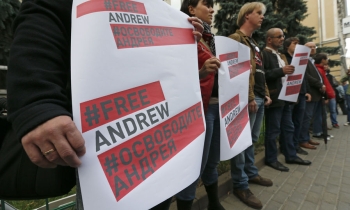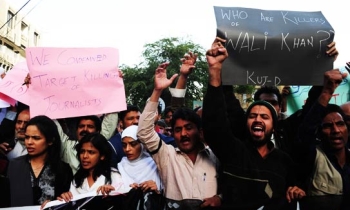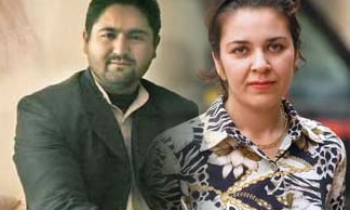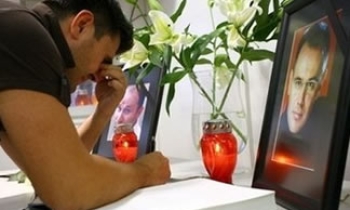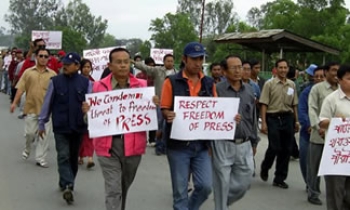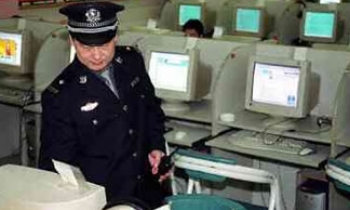COPENHAGEN, Feb. 7 -- The global furor over cartoons of the prophet Muhammad can be traced to one day last September when newspaper editor Flemming Rose smelled a good story.
He said he'd read that museums in Sweden and London had recently removed artworks their staff deemed offensive to Muslims. A Danish comedian told him that he felt free to desecrate the Bible but that he'd be afraid to do the same to the Koran. Then Rose read that a Danish children's book author couldn't find illustrators who dared draw Muhammad for a new book on Islam.
Rose, culture editor of the Jyllands-Posten newspaper, suspected the art world was self-censoring out of fear of Islamic radicals. So he contacted 25 Danish newspaper cartoonists with a challenge: Draw Muhammad as you see him. Twelve responded, and the newspaper printed their submissions, including one that depicted Islam's holiest figure with a bomb in his turban.
"We have a tradition of satire in Denmark," Rose, 47, said in an interview. "We do the same with the royal family, politicians, anyone. In a modern secular society, nobody can impose their religious taboos in the public domain."
At the Islamic Cultural Center in Copenhagen, Ahmed Abu Laban saw the cartoons. "We were astonished and extremely shocked," said Laban, 60. One of Denmark's most prominent Muslim clerics, he said the faith's tradition forbids any depictions of Muhammad. He saw the crude drawings as the latest smear against Muslims in Denmark, a nation whose long history of tolerance has been tested in recent years by rising anti-immigrant sentiment.
Laban immediately called together 11 other Muslim leaders to plan a response. Eliciting no regrets from the newspaper or the Danish government, they sent envoys to the Middle East to seek support there. The chain of events illustrates how, in the current climate of tension between Islam and the West, a small spark, printed on an inside page of a midsize newspaper in a small country, can escalate into an international conflagration.
This country of 5.4 million people, including about 200,000 Muslims, has long viewed itself as a haven for all views and faiths. But skyrocketing immigration in the 1990s spurred a backlash that culminated in the November 2001 election of Prime Minister Anders Fogh Rasmussen.
Rasmussen's government immediately passed some of Europe's toughest immigration laws and changed speech laws to make it illegal to instigate terrorism or offer advice to terrorists. The prime minister has relied on the support of the fiercely anti-immigration Danish People's Party, which holds nearly 13 percent of the seats in Parliament.
Morten Messerschmidt, a People's Party member of Parliament, said the clash between Muslims and ethnic Danes, who are largely Christian, was inevitable because the two cultures have vastly different traditions about issues such as free speech. He blamed Laban and other Muslim immigrant clerics for escalating the conflict and refusing to integrate and accept "freedoms that have created our highly developed societies in the West."
Thomas Larsen, an author and political analyst in Copenhagen, said the hardened views on both sides, along with images of demonstrators burning Danish embassies from Iran to Indonesia and demanding "Danish blood," have shocked Danes. "Every terrorist in the world will now know the name Denmark," Larsen said. "That is something new for us."
But many Muslims in Denmark have disavowed the vehemence of the protests. "The majority of Muslims don't care about this," said Naser Khader, a Syrian-born member of Parliament. "This is an Islamist agenda," he said, using a word describing the philosophy of Islamic radicals. "We don't want those imams to talk for us."
A new association of "moderate Muslims" that he formed has attracted 500 members in recent days, he said: "All of us, across cultures and religions, have to say 'enough is enough' to the Islamists."
People on all sides here -- including Laban -- agree that Laban is largely responsible for bringing the cartoons to the world's attention.
Within a week of their publication, Laban said, he and the 11 other Muslim leaders wrote letters to the newspaper and to the Danish culture minister. He said the only response was a letter from the Culture Ministry last week referring the matter to Rasmussen.
Next, ambassadors from 11 Muslim countries asked Rasmussen for a meeting, which he declined. Rasmussen on Tuesday said the envoys were demanding that he punish the newspaper, a step the prime minister has no power to take.
Laban said that response was typical of discrimination against Muslims in Denmark, which he said has risen sharply since the Sept. 11, 2001, attacks in the United States. "Muslims have been stigmatized," he said. "They have heard it at so many levels, horrible statements relating Islam to terrorism."
The cartoons, he said, are "the drop that made the cup overflow."
Getting no satisfaction in Denmark, Laban said, his group decided to send delegations to Egypt and Lebanon in early December to raise the matter with Islamic scholars and officials. The delegation in Egypt, he said, met with Mohammed Sayed Tantawi, head of al-Azhar University, and Ali Juma, the mufti, or top cleric, of Egypt. The group in Lebanon met with Amre Moussa, secretary general of the League of Arab States, Laban said.
The cartoons were "a volcano in Egyptian media," Laban said. "People were extremely angry. All thinkers and big writers have been engaged in this matter. And as we expected, the wave moved to the masses." Laban said that he supports peaceful protests and that violence and economic boycotts are "counterproductive."
Government officials and other critics here said Laban's delegations intentionally inflamed Islamic leaders in Egypt and Lebanon by passing off several obscene cartoons of Muhammad as among those published in the newspaper. Laban said those had been sent anonymously to Muslim leaders in Denmark and were shown to the Islamic officials as examples of anti-Muslim feeling in the country. He said no one suggested they had been published in the newspaper.
By last week, the cartoon controversy was major news on al-Jazeera and al-Arabiya, the two most influential Arabic language television news networks. Several Muslim countries announced boycotts of Danish goods, and increasingly violent demonstrations have continued in cities in many countries.
Here in Copenhagen, Rose, a tall and soft-spoken man, said he hasn't slept much in the past week. Interviewed in a quiet coffee shop just before midnight, he said his newspaper has received two bomb threats, and he got an anonymous e-mail telling him there was a contract on his life. He is guarded by police whenever he appears in public.
Rose bristled when asked if he had any regrets about publishing the cartoons. "Asking me that is like asking a rape victim if she regrets wearing a short skirt at the discotheque on Friday night," he said.
But the newspaper is offering a gesture to its critics: On Sunday, Rose said, it will publish a full page of cartoons satirizing Jesus and the Israel-Palestinian conflict. He said all of the 12 or so cartoons have appeared in the paper previously.
One, he said, is by Kurt Westergaard, who drew the picture of Muhammad with the bomb in his turban. The cartoon that will be reprinted shows a Star of David attached to the same kind of bomb. "Some people are accusing us of being one-sided," Rose said. "We are trying to show that we are not giving anybody a free ride."
Rose said he believes the cartoon controversy is a symbol of how a nation and its new immigrants learn to cope with each other. He said he respects Islam and is sensitive to different cultures -- he is married to a Russian woman. But he said he unconditionally supports Denmark's tradition of free speech.
"I apologize for having offended them," he said. "But as an editor, as a newspaperman, as long as I'm operating within the law, as long as I am not breaking any code of conduct in the Danish context, I cannot apologize for that."

